Pashupatinath Temple
Nestled on the banks of the sacred Bagmati River in the eastern part of Kathmandu, Pashupatinath Temple is one of Nepal’s most cherished religious landmarks. A UNESCO World Heritage Site and a key pilgrimage destination for Hindus, this temple is dedicated to Lord Shiva, revered here as Pashupati, the “Lord of All Living Beings.” Its rich history, spiritual significance, and stunning architecture make Pashupatinath a must-visit for anyone exploring Nepal’s cultural and religious landscape.
Inside, the central idol is a lingam, the abstract representation of Shiva. Only Hindus are allowed to enter the inner sanctum, while non-Hindu visitors can observe the temple grounds from across the river. The temple is also known for its cremation ghats along the Bagmati River, where open-air funerals are performed following Hindu rituals. Devotees believe that those cremated here are liberated from the cycle of birth and death, attaining moksha, or salvation.
Every year, the festival of Maha Shivaratri draws large crowds to Pashupatinath, with devotees coming to offer prayers and participate in religious ceremonies. The temple also serves as a hub for numerous sadhus, or holy men, who travel from across Nepal and India to celebrate the occasion.
You may also like: Muktinath Temple
- Pashupatinath Temple
- Key attractions of Pashupatinath Temple
- A Glimpse into History of Pashupatinath Temple
- Architectural Marvel of Pashupatinath Temple
- Religious Importance of Pashupatinath Temple
- Pashupatinath Temple as a Place of Living Culture
- Festivals and Rituals in Pashupatinath Temple
- How to Visit Pashupatinath Temple
- Best time to visit Pashupatinath Temple:
- Pashupatinath Temple FAQs
Key attractions of Pashupatinath Temple
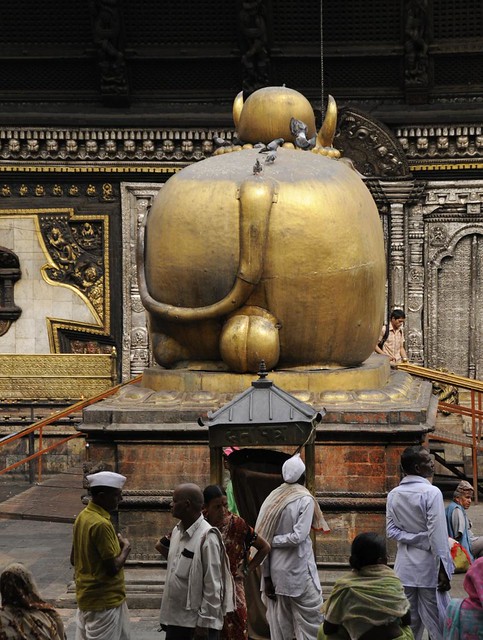
The Pashupatinath Temple offers numerous key attractions that draw visitors from all over the world, making it not only a revered religious site but also a culturally significant destination. Some of the major highlights include:
Main Temple of Lord Pashupatinath:
The temple’s sanctum, with the sacred Shiva lingam, is the centerpiece. The four-faced (chaturmukha) lingam is the primary focus of worship, symbolizing Lord Shiva’s universal presence and powers. Only Hindus are allowed to enter the inner sanctum, adding an air of exclusivity to the temple.
Cremation Ghats on the Bagmati River:
Located on the banks of the holy Bagmati River, the temple’s cremation ghats are a prominent feature. Open-air cremation ceremonies are regularly conducted here as it is believed that those cremated at Pashupatinath attain moksha (salvation). This is a deeply spiritual experience for visitors, who witness traditional Hindu funeral rites and rituals.
Holi Sadhus:
The Pashupatinath complex is famous for the presence of sadhus—holy men who live ascetic lives. These sadhus, with their distinctive appearances and practices, are a key attraction, especially during festivals like Maha Shivaratri, when thousands of them gather to worship Lord Shiva. Their unique lifestyles and devotion fascinate visitors.
Maha Shivaratri Festival:
Celebrated annually, Maha Shivaratri is the biggest festival at Pashupatinath, attracting thousands of pilgrims. Devotees from Nepal, India, and other parts of the world visit the temple to offer prayers and participate in religious events. The temple comes alive with processions, religious rituals, and chanting during this festival.
Architectural Beauty:
The temple’s striking pagoda-style architecture, gold-plated roofs, silver doors, and intricate wood carvings are a visual feast. The craftsmanship of the Newari artisans and the traditional design make it a key architectural attraction.
Sub-temples and Shrines:
The complex contains numerous smaller temples and shrines dedicated to various deities, such as the Vasuki Nath Temple, Unmatta Bhairav Temple, and Surya Narayan Temple. These add depth to the spiritual significance and historical value of the site.
Aarati Ceremony:
In the evenings, a beautiful Bagmati River Aarati (ritual of light) is conducted, where priests offer prayers to the river and Lord Shiva. The ceremony, with music, chanting, and lamps, creates a serene and spiritual atmosphere that captivates visitors.

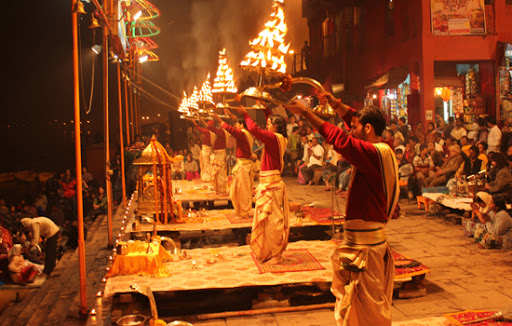
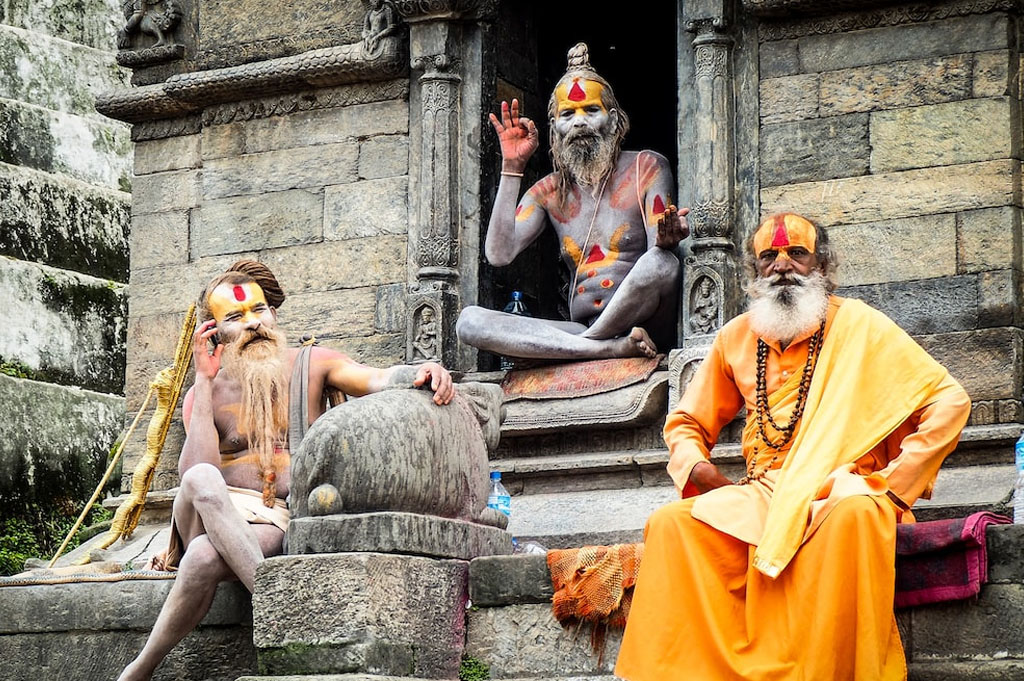
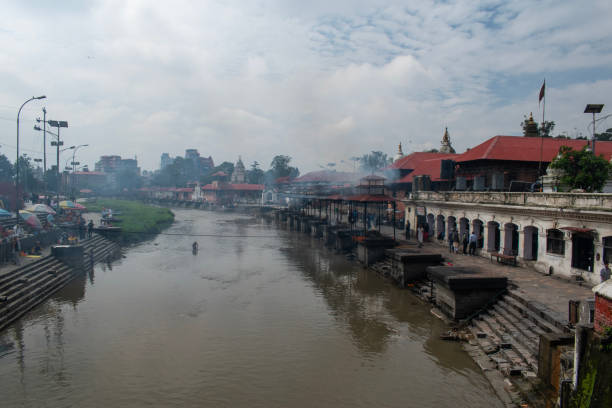
A Glimpse into History of Pashupatinath Temple
Pashupatinath’s origins stretch back centuries, with some records suggesting that the temple dates as far back as 400 CE. Though it has undergone various reconstructions, particularly after being damaged by natural disasters, the current structure was rebuilt in the 17th century by King Bhupatindra Malla. This ancient temple is considered one of the oldest and most sacred Shiva shrines in the world, drawing both pilgrims and history enthusiasts alike. The temple’s importance transcends Nepal, attracting Hindus from India and other parts of the world. It’s not just a symbol of Kathmandu’s spiritual heritage but also a living, breathing testament to the Hindu devotion that has shaped the culture of Nepal for millennia.
Architectural Marvel of Pashupatinath Temple
The Pashupatinath Temple complex is a beautiful blend of Nepalese pagoda-style architecture, complete with a two-tiered golden roof, intricately carved wooden beams, and four silver-plated doors. At the heart of the temple lies the main shrine, home to a large black stone lingam with four faces, each representing a different aspect of Lord Shiva—peace, destruction, creation, and preservation. This unique representation of Shiva’s many forms highlights the depth and complexity of his worship in Hinduism.

Surrounding the main temple are numerous smaller shrines and statues dedicated to various deities. The sprawling temple grounds are rich with history and spirituality, with the holy Bagmati River running through the site. The river is considered as sacred as the Ganges in India, and its banks are often lined with funeral pyres, as many Hindus believe that being cremated at Pashupatinath will lead to moksha, or liberation from the cycle of rebirth.
Religious Importance of Pashupatinath Temple
Pashupatinath is one of the holiest temples in the Hindu world, attracting pilgrims, especially during Maha Shivaratri, the festival celebrating Lord Shiva. Thousands of devotees gather to offer prayers, perform rituals, and seek blessings. Non-Hindus are not permitted inside the main temple but can witness the rituals and ceremonies from the surrounding areas.
The temple is also a key site for cremation rituals for Hindus in Nepal. The ghats along the Bagmati River are often lined with funeral pyres, as it is believed that being cremated here grants moksha (liberation from the cycle of birth and rebirth).
Pashupatinath Temple as a Place of Living Culture
The temple complex is not only a spiritual site but also a living hub of culture and tradition. The grounds are often filled with sadhus, Hindu holy men, who have renounced worldly possessions and live in devotion to Lord Shiva. Their painted faces, ash-covered bodies, and brightly colored robes offer a glimpse into the mystical side of Hinduism.
While non-Hindus are not permitted to enter the main temple, visitors can still explore the extensive temple grounds, witness religious ceremonies, and soak in the tranquil atmosphere that surrounds the site. The view from the surrounding hills provides a stunning panorama of the temple complex against the backdrop of the river and the surrounding forest.
Festivals and Rituals in Pashupatinath Temple
Visiting Pashupatinath during festival times offers a unique experience. Maha Shivaratri, Teej, and Bala Chaturdashi are celebrated with great fervor here. Teej is particularly colorful, as women come to fast and pray for the well-being of their husbands. The temple’s energy is vibrant during these times, with music, rituals, and cultural performances bringing the entire complex to life.
Bala Chaturdashi, a festival that commemorates the souls of the deceased, is another significant event at Pashupatinath. Devotees scatter seeds along the temple grounds in memory of their loved ones, symbolizing the eternal cycle of life, death, and rebirth.
How to Visit Pashupatinath Temple
If you’re planning to visit Pashupatinath Temple, it’s located just a short drive from Tribhuvan International Airport of Kathmandu and about 5 kilometers east of the main tourist hub of Thamel. While only Hindus are allowed inside the temple’s main sanctum, all visitors can wander the outer complex, witness rituals along the riverbanks, and explore the temple’s surroundings.
There are plenty of vantage points from where non-Hindu visitors can observe the daily rituals, including the famous cremation ceremonies along the Bagmati River. The peaceful surroundings and spiritual ambiance make it an ideal spot for reflection and meditation.
Best time to visit Pashupatinath Temple:
The best time to visit the Pashupatinath Temple is largely influenced by weather conditions, festival schedules, and crowd preferences.
- October to March (Cooler months): The period between October and March is considered the best time to visit due to favorable weather. The climate during these months is mild and pleasant, making it comfortable for exploring the temple complex and attending rituals without the discomfort of heat or monsoon rains. Winter months (December–February) can be slightly cooler, but it is still a great time to visit.
- Maha Shivaratri Festival (February/March): If you want to experience the temple at its most vibrant, visiting during Maha Shivaratri is ideal. This major Hindu festival, dedicated to Lord Shiva, takes place between February and March (based on the lunar calendar) and draws massive crowds of pilgrims and sadhus. The atmosphere is electrifying, with special rituals, processions, and the entire complex illuminated in devotion. Keep in mind, though, that the temple can get extremely crowded during this time.
- Early Morning Visits: For a quieter, more serene experience, it’s best to visit the temple early in the morning (around 4 a.m. to 6 a.m.) when the temple opens. This allows you to witness the morning prayers and rituals, while avoiding the larger crowds that tend to gather later in the day. The peaceful ambiance at dawn adds to the spiritual significance.
- Avoiding Monsoon Season (June to September): The monsoon season, from June to September, can make travel and temple visits more challenging due to heavy rainfall. The temple grounds can become slippery, and outdoor rituals by the river may be difficult to observe comfortably. For this reason, it’s best to avoid visiting during these months unless you’re comfortable with the rainy conditions.
Pashupatinath Temple FAQs
1. What is the significance of Pashupatinath Temple?
The Pashupatinath Temple is one of the holiest temples for Hindus, dedicated to Lord Shiva, in his form as Pashupati, the “Lord of All Living Beings.” It is a UNESCO World Heritage Site and serves as a major pilgrimage site, attracting thousands of devotees annually, particularly during festivals like Maha Shivaratri.
2. Where is Pashupatinath Temple located?
The temple is located in Kathmandu, Nepal, on the banks of the sacred Bagmati River, which holds a significant religious status similar to the Ganges River in India.
3. Who can enter the main temple’s inner sanctum?
Only Hindus are allowed to enter the main temple’s inner sanctum and perform prayers. Non-Hindus are permitted to explore the temple’s surroundings and view the temple from across the Bagmati River.
4. What are the main festivals celebrated at Pashupatinath?
The most important festival at Pashupatinath is Maha Shivaratri, which takes place in February or March. Thousands of devotees gather for religious celebrations, offering prayers, and participating in various ceremonies. Other festivals such as Teej (celebrated by women for the long life of their husbands) are also significant.
5. When is the best time to visit the Pashupatinath Temple?
The best time to visit is between October and March, when the weather is cool and pleasant. Early morning visits (around 4 a.m. to 6 a.m.) are also ideal for those seeking a peaceful experience. For witnessing the vibrant culture, visiting during Maha Shivaratri in February/March is highly recommended.
6. What are the opening hours of the Pashupatinath Temple?
The temple typically opens from 4 a.m. to 9 p.m. The main shrine opens for worship around 4 a.m., while the aarti (prayer ritual) is performed in the evening. The temple remains busy throughout the day with regular religious activities.
7. What is the dress code for visiting the temple?
Visitors are expected to dress modestly, covering their arms and legs as a sign of respect. Footwear must be removed before entering the temple complex.
8. Is photography allowed inside the temple complex?
Photography is generally not allowed inside the main temple complex and the inner sanctum. However, you can take photos around the outer areas and the ghats by the Bagmati River.
9. What is the significance of the cremation ghats?
The ghats on the Bagmati River are used for Hindu cremation ceremonies. According to Hindu belief, being cremated at Pashupatinath ensures the deceased’s soul attains moksha (liberation from the cycle of rebirth).
10. How can I participate in the evening Aarati ceremony?
The evening Aarati on the Bagmati River is open to all, and you can participate or observe it from designated areas. It is a mesmerizing spiritual ritual with music, chants, and lamps, held around 6:30 p.m. each evening.
How many faces are there in Pashupatinath Temple?
Pashupatinath has four faces. Sadyojata, Vamadeva, Tatpurusha, and Aghora are the four faces.
Who built the Pashupatinath Temple of Nepal?
Pashupatinath’s origins stretch back centuries, with some records suggesting that the temple dates as far back as 400 CE. Though it has undergone various reconstructions, particularly after being damaged by natural disasters, the current structure was rebuilt in the 17th century by King Bhupatindra Malla.
How is Pashupatinath Temple related to Mahabharata?
It is said that when the Pandavas appeared to the Pandavas in the form of a bull by Shiva. Seeing the Pandavas, Lord Shiva took the form of a bull and started running away. While his hind stayed in Kedarnath, his head part emerged in Pashupatinath, Nepal.
What is the meaning of bull stone structure in Pashupatinath Temple?
The bull in Pashupatinath Temple is Nandi, bahan(vehicle) of Lord Shiva.

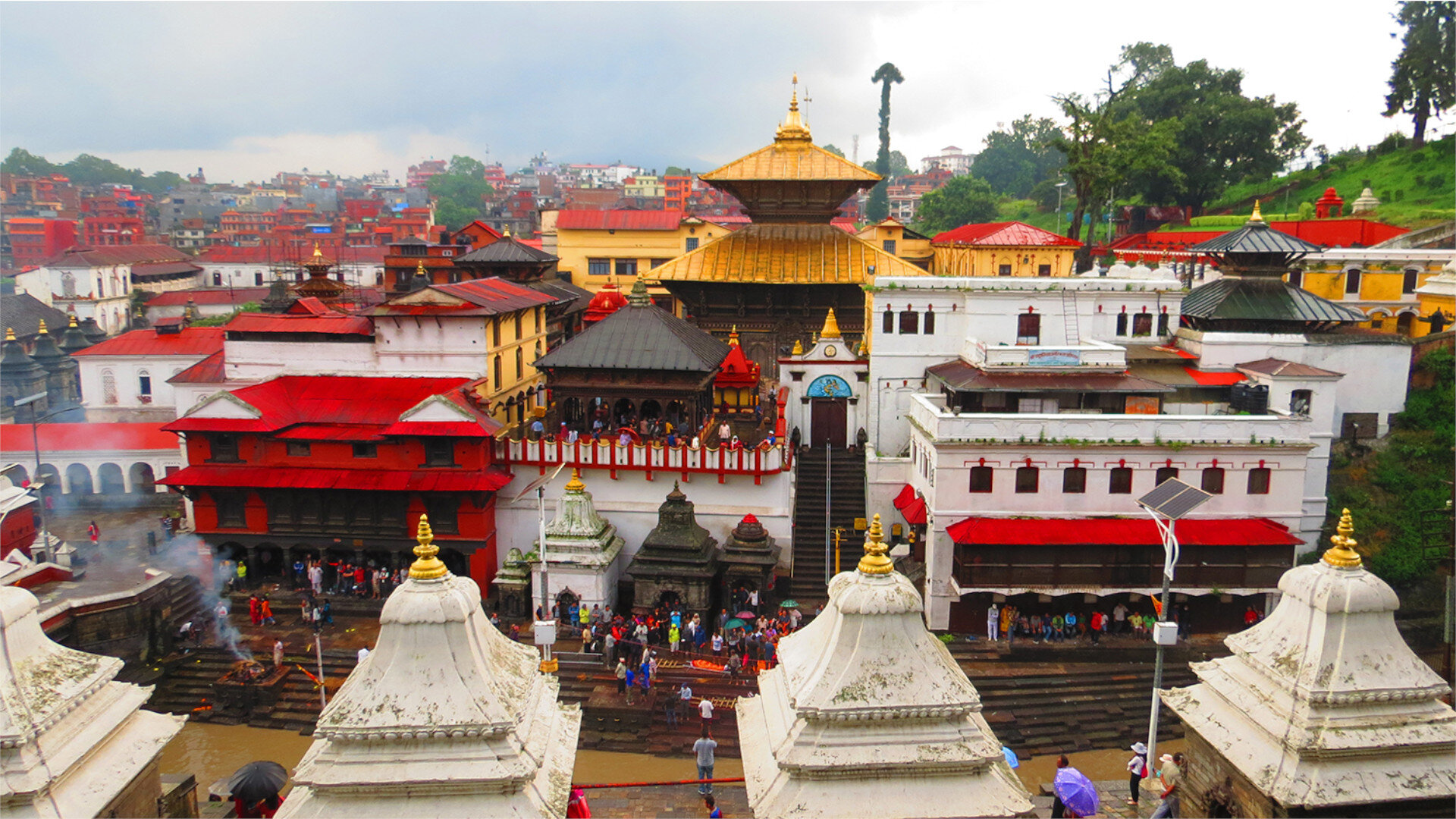

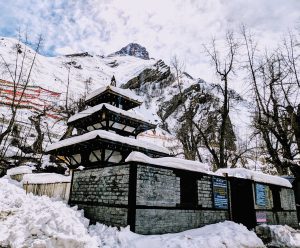
2 thoughts on “Pashupatinath Temple: Sacred Jewel of Kathmandu”